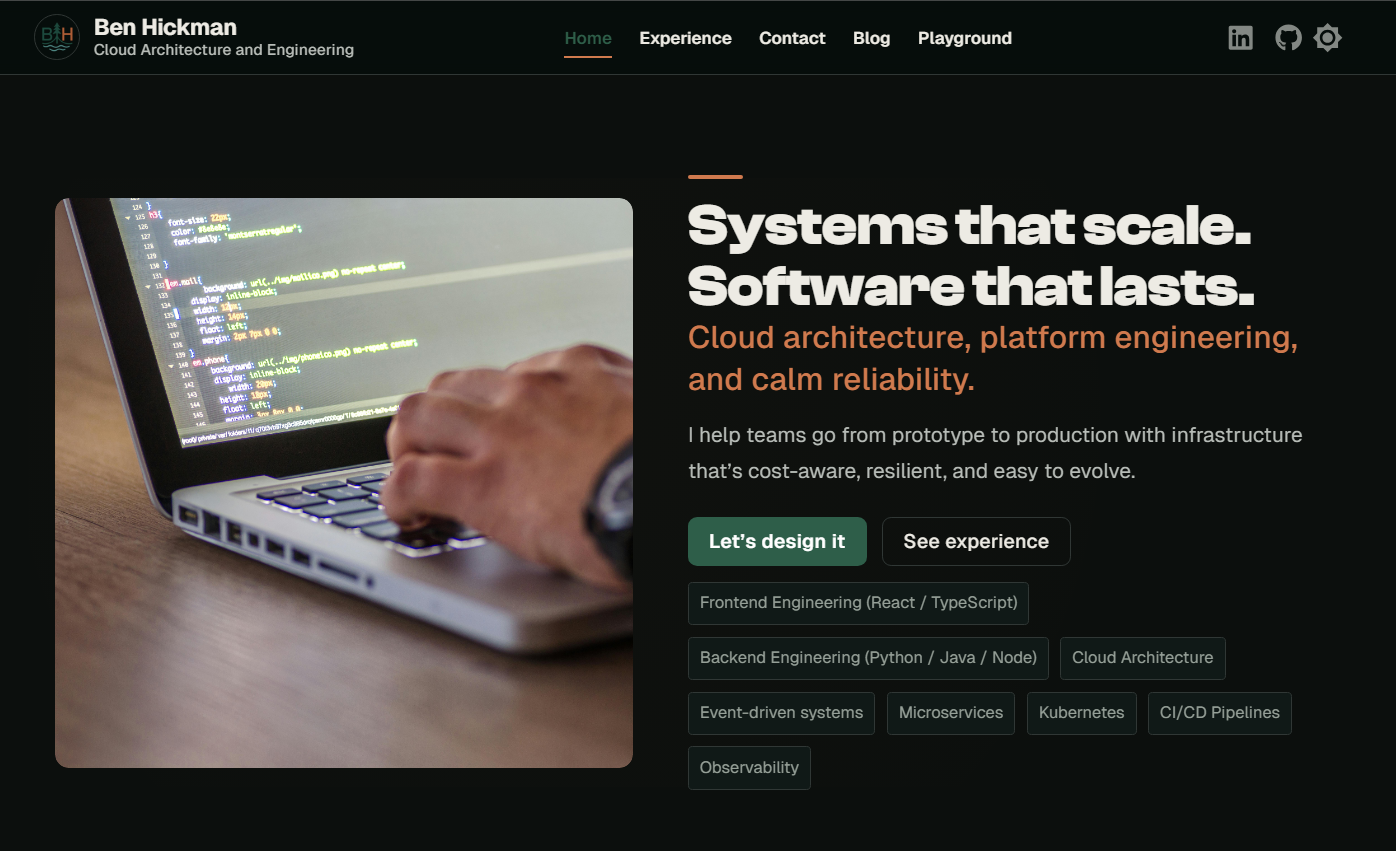For much of my professional practice, design occupied a secondary role, something to refine only after the essential engineering work was complete. Functionality seemed to deserve priority, while visual coherence was often treated as a luxury for when time permitted. During the recent redesign of my personal site, however, I began to recognize how profoundly design theory has developed.
Contemporary web design in 2025 appears less focused on surface embellishment such as gradients or excessive color and more attentive to restraint, structure, and systemic clarity. This realization reshaped my process. What began as an effort to enhance visual appeal gradually became an inquiry into the reasoning behind design itself. The task shifted toward constructing an interface that communicates calm professionalism and technical maturity through clarity rather than decoration.
Reconsidering Purpose and Intent
Before making choices about layout or color, I needed to consider what the site should express about my work. The answer involved qualities such as simplicity, reliability, and thoughtful structure. These values encouraged me to remove unnecessary visual elements and prioritize hierarchy as a guiding principle. My goal was for the interface to function like a well-engineered system that remains balanced, readable, and resilient.
Designing from the Tokens Up
Instead of experimenting with arbitrary color schemes, I adopted a method based on design tokens. Every variable, including color, spacing, motion, and typography, was defined in one place using OKLCH values to maintain consistency across both light and dark modes.
The resulting palette, inspired by the natural tones of Minnesota’s environment (evergreen, copper, and lake teal), conveys an organic yet contemporary quality. This token-based structure transformed design into infrastructure. When spacing or radius values change, the adjustments propagate throughout the system automatically, maintaining coherence and reducing inconsistency over time.
Color, Contrast, and the Value of Restraint
Earlier versions of the site relied heavily on bright accents and gradients, visual conventions that tend to lose their appeal quickly. The redesigned version uses color in a more intentional way. It appears only where it serves a clear purpose, such as indicating links, focus states, or interactive elements.
The rest depends on contrast, whitespace, and composition to establish hierarchy. Modern design increasingly values this restraint because limited use of color enhances its visual impact when applied deliberately.
Layout, Scale, and the Logic of Fluidity
Spatial rhythm represented another major area of change. Older layouts often suffered from overcrowding or excessive empty space, usually caused by fixed measurements that ignored screen context. By introducing fluid spacing through the clamp() function, margins and padding now scale proportionally with viewport size.
The result maintains a consistent visual balance across devices. Rounded corners and shadows were also refined with smaller radii and softer gradients, creating subtle depth without distraction. These adjustments align with a broader design movement that favors perceptual comfort over visual spectacle.
Typography as Structural Principle
Typography, once treated as a secondary detail, became a central design element. The pairing of Space Grotesk for headings and Inter for body text provides both contrast and visual harmony. Because both are variable fonts, they support responsive adjustments that preserve legibility in different viewing contexts.
Attention to line height and spacing introduced a rhythm that improves readability, especially in dark mode where strong contrast can strain the eye.
From Pages to Systems
The redesign revealed that a website should not be seen as a collection of pages but as a unified system of reusable components. Each section, including the hero banner, timeline, and summary cards, was rebuilt with consistent spatial and structural logic.
This approach promotes composability, simplifies maintenance, and helps prevent visual drift over time. Thinking in systems rather than pages makes design decisions more sustainable and easier to evolve as the site grows.
Reflections on Integration
The most enduring insight concerns the growing overlap between design and engineering. These two disciplines now operate as parts of the same framework, grounded in shared principles of clarity, consistency, and intention. Effective interfaces emerge not from decoration but from the careful orchestration of detail, hierarchy, rhythm, accessibility, and semantic precision.
In the end, the redesign was not simply a cosmetic update. It served as a reflective assessment of how I approach creation itself. The finished product, characterized by cleaner code, calmer visuals, and a more confident experience, expresses the kind of engineering I value most: scalable, sustainable, and distinctly human in both thought and execution.
